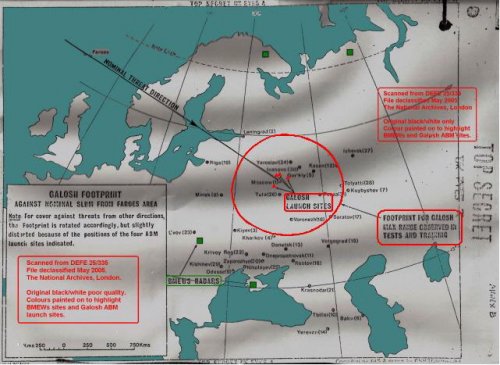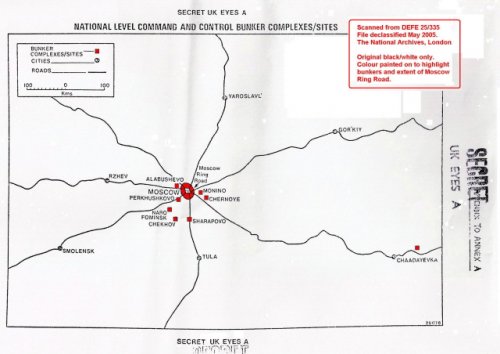You've lost me. Sorry. I try hard (my wife says I'm very trying). I share
L.Arnold's impenetrability. Off, now to read
Moore. I'm trying to be coherent with the thought that your and others' WE177 quantities and deployed Units are over-stated.
After 1958 the only purpose in UK building warheads out-of-US-custody was to disperse them. BAOR's SSMs, RAFG/TBF on Main Base, and RAF MR v.
boomers could take 'E' stores for just as long as US cared to issue them free-of-charge, thank you. MBF's dispersal mode needed "UK's"
Red Snow in
Yellow Sun Mk.2/
Blue Steel, briefly until c.1965 when 144 Skybolt, ordered 20/6/60, would arrive, armed with ZA297/W-49.
UK-solo Improved Kiloton Bomb, OR.1177/RN GDA.10, was initiated c.1960 as 10kT WE177A for RN-carrier/NDB roles, and for TSR.2 in NEAF/FEAF: and so at recurring unit cost only, for RAFG in that short-field notion (odd undercarriage). So, AWRE's programme on 17/12/62 was for WE177A for TSR.2 to replace 32 NEAF
Red Beard/Canberra and 64 RAFG 'E'/Canberra (?2 for 1, dual carriage), and 48 WE177A(N) plus NDBs for 3 Strike Task Forces; plus 144 ZA297.
On 18/12/62 no ZA297; on 6/4/63 the
Polaris Sales Agreement introduced (your 15/8

5x16x3 "UK" warheads for A3T for 1968 deployment. RAF slipped in as MBF bridge intended 1965-1968, 2 Vulcan Wings, 48, of laydown Weapon X, WE.177B, utilising ZA297 resources. WE177A was set back. RAF tried to rollover its WE177B onto (24x2) TSR.2 in NEAF/FEAF, but instead kept the WE177B Vulcans as TBF to replace 7/12/64 grounded Valiant. So these
48 were the sole
WE177B; from 1/8/82 36, from 1/10/86, 24 were on Marham Tornado.
From 2/66: F-111K in NEAF/FEAF with (24x2) WE177A released from
CVA-01; RAFG would have 'E'/(36x2) F-4M until c.1971, then WE177A/AFVG-UKVG. In July,1968 that became 24 WE177A/Buccaneer S.2B (deployed from early-1971) and Jaguar GR.1, later MRCA (to be Tornado). I think these
24 were RAF's sole land-target
WE177A, and the other
24 became firstly RN
WE177A(N), then takenover for RAF Bucc/Tornado maritime role.
RAFG 'E'/F-4M rolled over for WE177C/Jaguar in 4 Sqdns from 11/75; you additionally have WE177C at Coltishall 6 and 54 Sqdns and at Lossie 226 OCU. (online)
2005 Defence Estates Baseline Report (which led to Colt. becoming HMP Bure) has the sim. as the only 1970s' building: every bicycle shed is listed: no SSA. I doubt the allocation of nukes to sit on Reserve stations. Maybe the attrition point was that UK-based a/c and crews would deploy to Bruggen. I suggest
60 RAFG Jaguar
WE177C, rising in 1985-ish to
84. Sources for the extra 24 are either ex-Vulcan WE177B, and/or ex No.3 warheads displaced by
Chevaline. Source for the 60 is, I suggest, the 5-shipset A3 pool inherited by Minister
Healey and seen as excessive and free (sunk!) just as he chose to replace RAFG 'E'/runway-hugging F-4M with Jaguar dispersed to autobahns.
So, for me: 24 RAF WE177A; 24 WE177A(N), RN then RAF; 48 WE177B of which 24 in 1985-ish became WE177C; and 60 WE177C. I think RN had 28 WE177A(NDB) on helos/SHAR: so, in all, 184 deployed (add spares).


